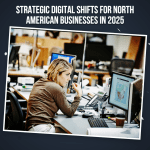Meta Platforms Inc., parent company to Facebook and Instagram, has announced an ambitious plan to fully automate digital advertising by 2026. This initiative represents a profound shift in how advertising campaigns are conceived, constructed, and deployed across social media. With artificial intelligence at the core, Meta’s move will undoubtedly reshape the expectations, practices, and strategies of digital marketing teams worldwide.
While such automation holds significant potential for small businesses, solopreneurs, and lean marketing teams, it also raises critical concerns regarding creative control, data ethics, and the future of professional advertising services. For leaders navigating the increasingly complex digital landscape, the key will lie in understanding both the capabilities and the limits of this automation model.
How Meta’s AI Driven Ad System Works
Meta’s future advertising ecosystem is designed to minimize the human workload traditionally required to launch a paid campaign. Advertisers will initiate campaigns by submitting a product image and identifying a budget or goal. From there, Meta’s artificial intelligence systems will manage the entire process, including:
- Generating written copy and visual assets
- Designing video content suitable for each platform
- Selecting and segmenting audiences based on user data
- Recommending and adjusting budget allocation
- Optimizing campaign variations in real time
This level of automation aims to increase precision and efficiency while lowering the barrier to entry for high performing ad campaigns.
Strategic Advantages for Smaller Organizations
For small businesses and startups, Meta’s approach could significantly reduce the time and cost associated with creating and managing advertising campaigns. Key benefits include:
- Professional grade advertising without an agency: Businesses with limited resources will be able to run high quality campaigns without needing an in house marketing department or external agency.
- Real time optimization: The AI will continuously adapt campaigns to improve performance based on engagement metrics and behavioral data.
- Faster deployment cycles: Time to market for new campaigns will decrease, allowing businesses to respond quickly to market opportunities.
- Improved budget control: Automated systems will offer data driven budget recommendations, reducing the guesswork associated with ad spending.
These features have the potential to democratize access to advanced marketing tools that were previously out of reach for many small to medium sized enterprises.
The Importance of Maintaining Strategic Oversight
Despite these efficiencies, Meta’s system introduces a critical trade off: the potential erosion of creative and strategic control. By delegating content creation and audience targeting to artificial intelligence, businesses may lose the opportunity to craft differentiated messaging or reinforce a distinct brand identity.
Further concerns include:
- Homogenization of brand messaging: AI driven content risks becoming formulaic or impersonal.
- Miscaligned ad tone or content: Automated systems may misinterpret a brand’s voice or cultural context.
- Data privacy and compliance: While Meta is committed to platform standards, businesses remain accountable for legal and ethical use of customer data.
Therefore, while automation may simplify execution, it cannot replace the nuanced decision making required for long term brand strategy.
Industry Wide Implications and Competitive Positioning
Meta is not alone in this strategic trajectory. Google, Amazon, and TikTok are also investing heavily in AI driven advertising tools. The advertising ecosystem is moving rapidly toward a future where algorithms and platforms define not just delivery but the very structure and content of advertising itself.
In this context, executives must assess the broader implications:
- How does AI affect competitive differentiation?
- What safeguards are in place to protect brand reputation?
- What governance frameworks must be developed for oversight?
Strategic planning must evolve to account for the growing influence of platform automation.
Preparing for the Shift: Recommendations for Business Leaders
- Assess current reliance on Meta’s ecosystem: Evaluate your business’s exposure to platform risk and develop contingency strategies for multi platform campaigns.
- Develop a brand governance guide: Document voice, tone, visual standards, and compliance requirements to ensure consistency, especially when using automated content tools.
- Invest in team training: Even as systems become more automated, human input is required for brand alignment, ethics, and campaign performance review.
- Test AI tools with clear metrics: Use tools like Meta Advantage+ to begin experimenting, but track performance, tone accuracy, and brand alignment closely.
- Plan for evolving roles: Creative professionals and media buyers must evolve into strategic advisors who interpret data, shape high level narratives, and manage AI driven workflows.
Conclusion
Meta’s automated ad creation platform represents a transformative advancement in digital marketing. For smaller teams, it provides an opportunity to run more effective campaigns with fewer resources. However, this convenience must not be mistaken for a comprehensive strategy.
Advertising, at its core, remains a function of trust, differentiation, and brand value. Businesses that rely solely on automation risk losing their voice in an increasingly crowded market. The most successful organizations will be those that use automation as a tool, not a replacement, and maintain strategic oversight at every stage of the campaign lifecycle.
As AI continues to mature, its role in marketing will only expand. Businesses must begin now to adapt their structures, train their teams, and reinforce their brand foundations. Automation may simplify delivery, but leadership will remain the deciding factor in long term digital success.









